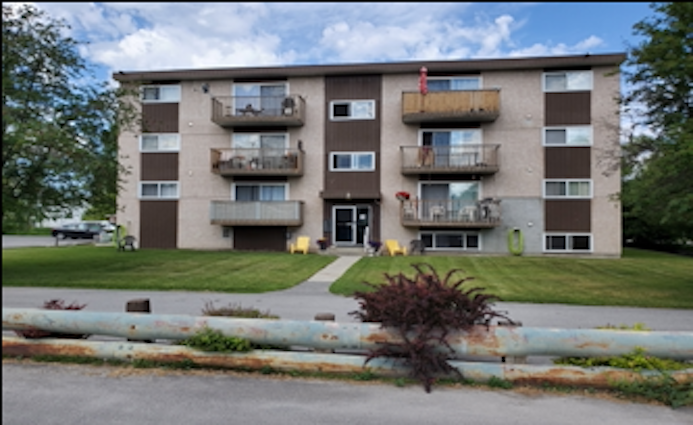Rising rental rates, quicker turnovers and lower per-door prices are among the reasons multi-family investors are looking towards smaller B.C. towns for cash-flow opportunities.
A recent portfolio sale in the Kootenays provides an insight into the advantages when compared to buying in Metro Vancouver, according to those close to the deal.
The transaction involved a Lower Mainland-based investor purchasing six rental apartment buildings with a total of 242 rental units in three separate Kootenay communities. The combined sale price was $23.25 million, which works out to $96,074 per door.
As a comparison, at about the same time a 97-unit multi-family rental building in Coquitlam, B.C., sold for $23.17 million, the equivalent of $238,865 per door.
And this could be considered a bargain price.
According to research from Goodman Commercial, a leading multi-family real estate agency in Vancouver that publishes the Goodman Report, the average per-door price in suburban Metro Vancouver is now $520,860, up 33 per cent from 2022 and higher than the City of Vancouver average of $434,326.
Two previous multi-family sales in Coquitlam in the first half of this year traded at an average of $816,547 per apartment, noted Mark Goodman, a partner in Goodman Commercial.
Smaller centres offer more than lower prices, said Bruce Long of Macdonald Commercial Real Estate Services, Vancouver, who brokered the Kootenay portfolio sale, which included properties in Cranbrook, Elkford and Sparwood.
“One of the advantages to buying rentals in smaller B.C. towns is the turnover rate is usually a bit higher, giving the owner a better opportunity to achieve market rents,” Long noted.
This may seem counterintuitive, but in B.C. the province restricts rental increases to 2 per cent per year (rate caps for 2024 have yet to be announced), but when a tenant vacates, rents can ascend to the current market value.
Rents have also been increasing in smaller centres, many of which are seeing the sub-2 per cent vacancy rates common in the big city.
In Cranbrook, for instance, Canada Mortgage and Housing Corp. pegs the vacancy rate at around 1.1 per cent. A study of current offerings in the city of 20,000 shows typical one-bedroom apartment rents range from $1,300 to $1,650, which are not much lower than rents in the suburbs of Metro Vancouver.
The high per-door prices in Metro Vancouver may be giving some landlord investors pause.
In the City of Vancouver, investors have gravitated to smaller buildings, Goodman noted. The average size and price of rental buildings sold in the city during the first half of 2023 fell to 19 suites and $8.1 million, respectively, the lowest levels since 2016.
As well, in the first half of 2023, just 37 buildings were purchased across Metro Vancouver, down 57 per cent from a year earlier. The total dollar volume was down 60 per cent, year-over-year, to $527.5 million. This is among the lowest level seen during the first half of the year for the past 18 years: only the 2009 financial crisis and the start of global pandemic in 2020 saw fewer transactions, according to the Goodman Report.
It is not clear where all the Metro investors have gone, but Long suggests some may be busy shopping in smaller B.C. towns.



